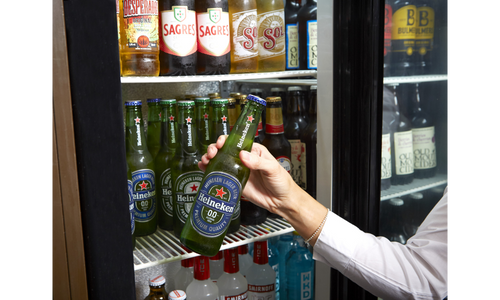

Swaps to save money and drive footfall
There is no universal solution to make a business more sustainable, but a series of small steps can improve any outlet’s carbon footprint and potentially improve their bottom line. A great place to start is with free tools, such as Zero Carbon Forum’s Carbon Calculator. Simply sign up and complete a short questionnaire to produce a high-level carbon footprint and view of your business impact – it’s completely free.
You can also download a toolkit of initiatives to help reduce energy usage, with low-cost solutions highlighted first. Energy saving opportunities are often biggest in low throughput and closed periods, so Zero Carbon Forum’s free ‘Save while you sleep’ checklist is also worth checking out to help reduce overnight energy usage.

“Carry out a high-level carbon footprint review to find out where your major emission areas are and then start to look at how to improve these, because it’s personal to anyone’s business.”
Alastair Tyson, Project Manager at Zero Carbon Forum

For Wet-Led Pubs
- Reduce waste: Fit water saving devices where possible, e.g. taps, toilets, etc. Reviewing your cellar equipment can also lead to significant savings. HEINEKEN SmartDispense® can help improve an outlet’s sustainability credentials to reduce waste and, importantly, save money.
- Bar Fridges: Consolidate packaged products into fewer fridges overnight then turn off empty fridges. Or, where possible, simply switch off all bar fridges overnight but ensure you have enough time to chill everything down again ready for service, as nobody wants a warm beer or tepid white wine!
- Cellars: Use a wall-mounted thermometer to make sure your cellar is chilled to 11-13°C to maintain quality. If the cellar temperature is too cold by just 1°C, that could mean an extra £1,300 added to your energy bill per year.
- Cocktails: Citrus peels result in waste fruit, so challenge bar staff to come up with solutions such as dried fruit garnishes


“We took the passionfruit out of our Pornstar Martini and replaced it with a rice paper disc. The Pornstar Martini is our top selling cocktail, so we sell about 1.2 million a year, which is something like 35 tonnes of passionfruit now not coming over on a plane from South America and around 100 tonnes of carbon saved as a result of the change. It created a cash saving at the same time, which has allowed us to invest that money back into doing some of the more glamourous things like electrifying kitchens and changes to cellar technology.”
Andy Dyson, Business Development Director for Revolution Bars

For Food-Led Pubs
- Water: Fit water saving devices where possible, e.g. taps, toilets, etc. Also, make sure to only run appliances like dishwashers when fully loaded and set to the most efficient cycle – saving both energy and water.
- Kitchen: Consolidate food and stock into fewer fridges overnight then turn off empty fridges
- Layout: The kitchen layout can affect the efficiency of equipment. Ensure fridges aren’t next to the oven and all equipment has room to breathe
- Initiate some healthy competition: Kitchens are typically one of the highest energy usage areas, so encourage your chefs and kitchen teams to get creative over ways to reduce wastage and energy consumption.
- Reduce cooking temperatures: Those final few degrees are the least efficient, so review cooking temperatures and timings to save energy
- Buying seasonal and local: When selecting food and drink suppliers, sourcing local is becoming increasingly popular as it both supports the community and reduces carbon footprint. This is a great USP for independent pubs and bars, but larger brands are also playing a significant part in creating a sustainable on-trade. Stocking a mix of local products and larger brands that are recognised for their sustainability credentials can therefore boost your green credentials as well as sales.


“Look at the little things and the little processes.
When we first moved into our kitchen, we used pea shoots (as a garnish). It equated to 25p per serving, that we were spending on pea shoots alone.These were then coming back into the kitchen. At 25p times 50 covers a day, by swapping these out, we saved our business £9,000 a year.
With sustainability, just look at the small elements.
Not only are you saving the planet, but you’re saving bottom line profit and reducing waste.”
Sara Bird, The Camelot

“We are lucky enough to have a flat roof, so we can gather the water from this flat roof and put it through our toilets. It’s going to save us a fortune, but also it’s very sustainable and it’s a lovely thing to do.”
Paul Bird, The Camelot

